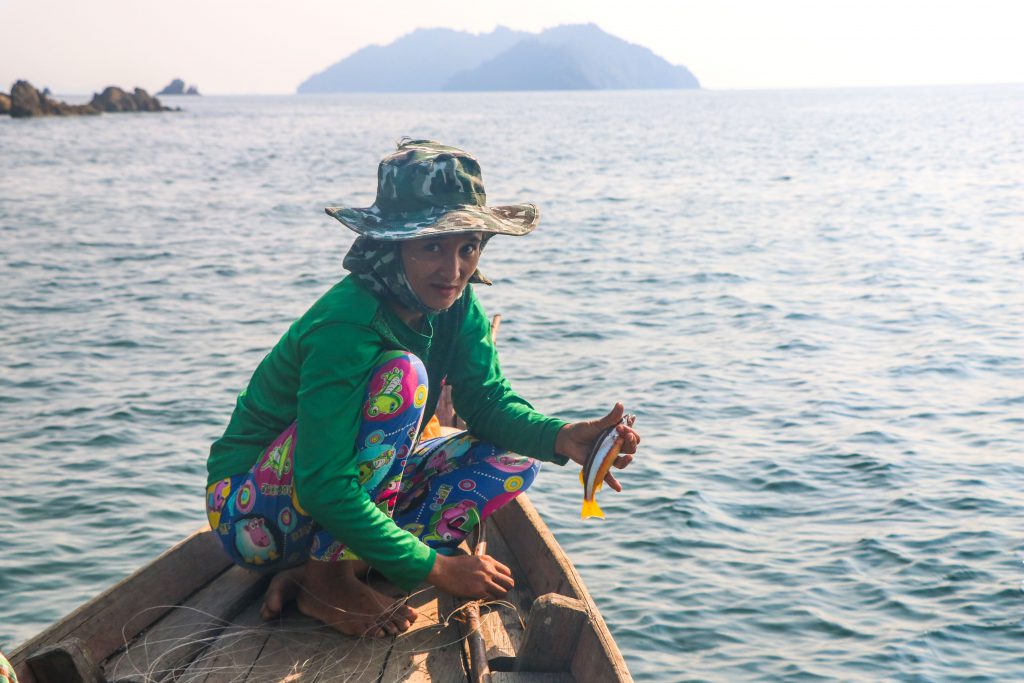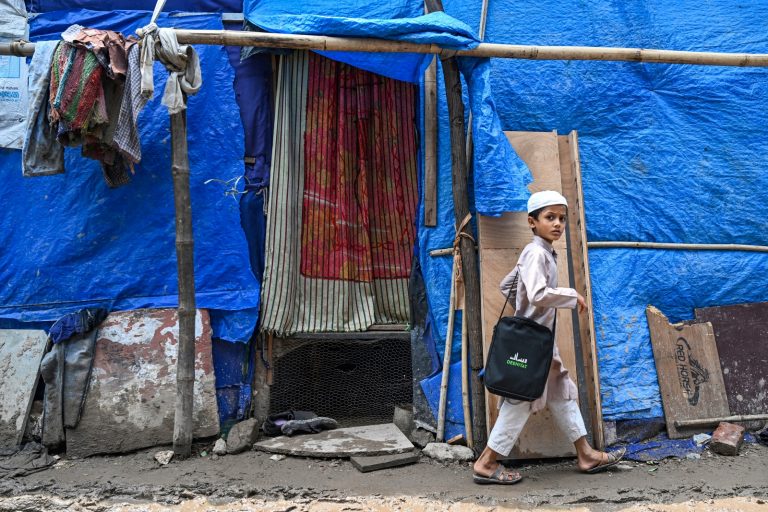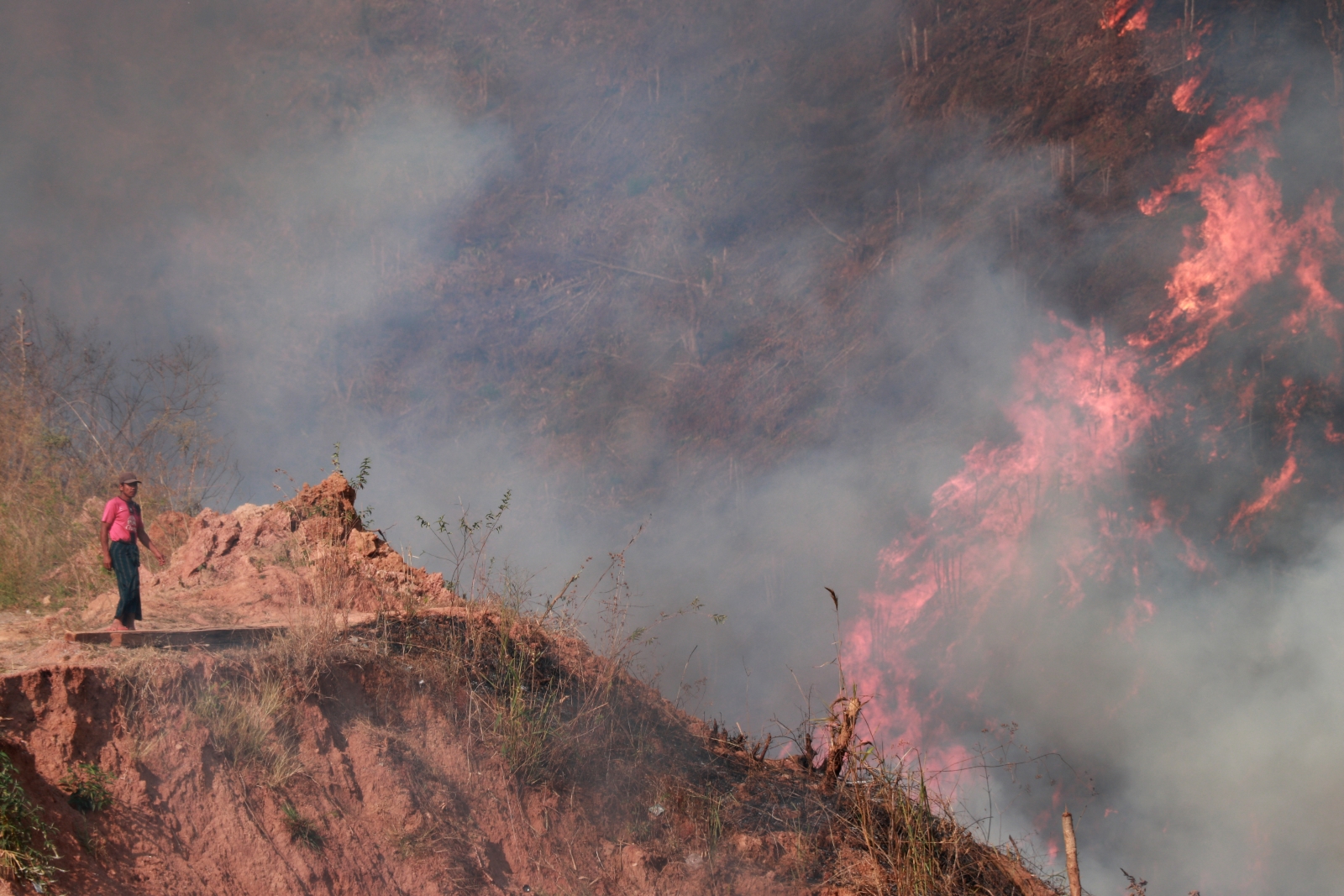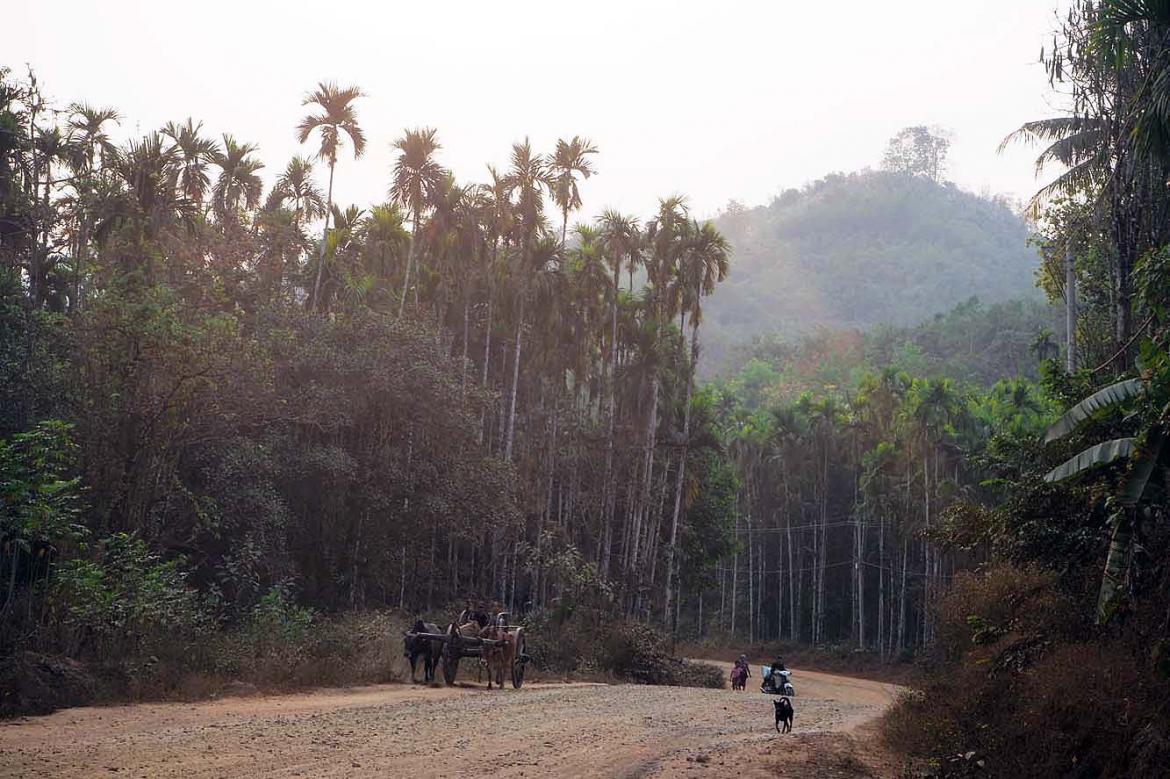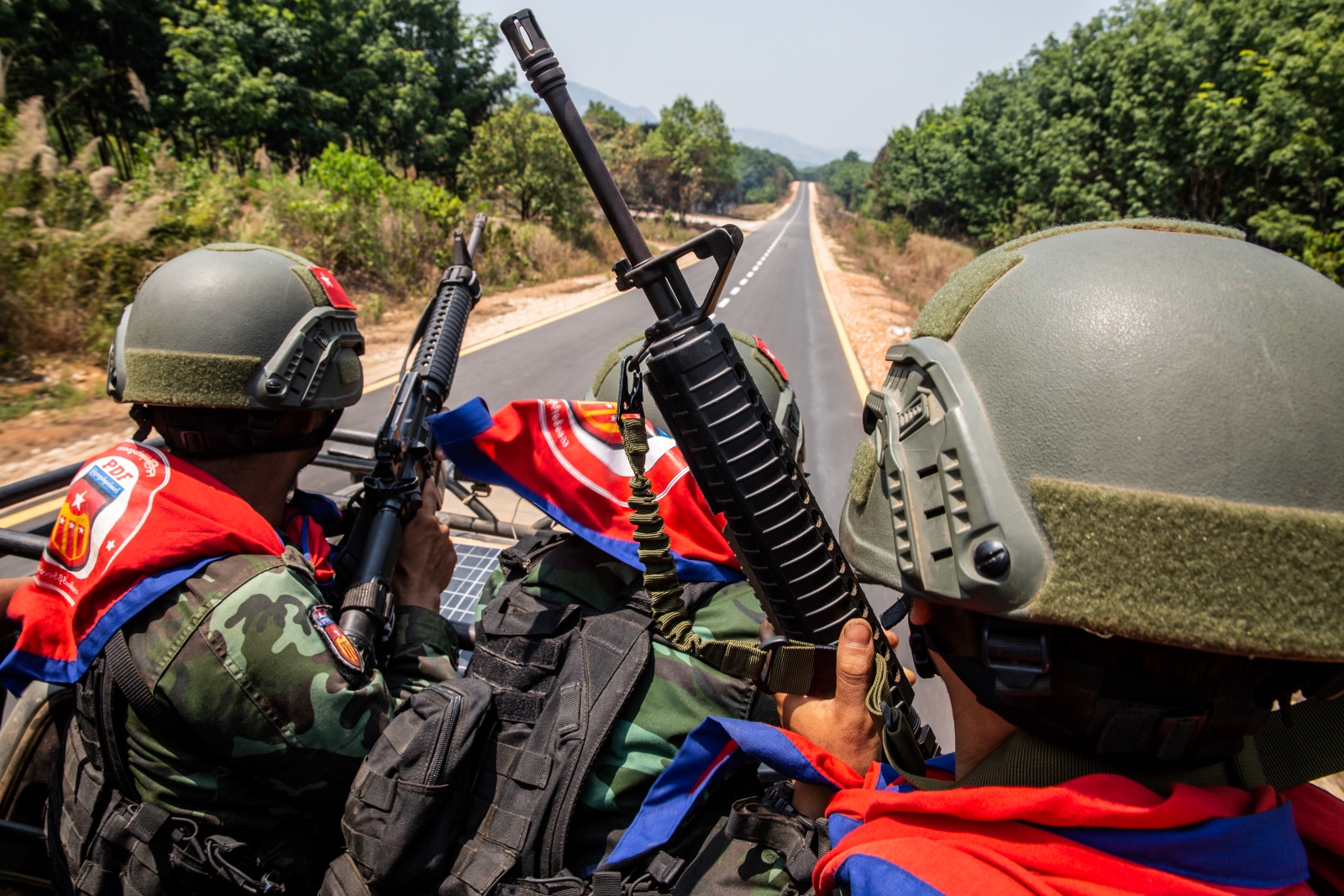Communities in biodiverse Tanintharyi Region are spurning big, top-down projects and seeking recognition for their own approach to conservation.
By JACK JENKINS HILL | FRONTIER
From its forested borderlands in the east, to vast mangrove forests and hundreds of island ecosystems in the Andaman Sea to the west, Tanintharyi Region is a bastion of nature and biodiversity. The region is home to one of the largest remaining expanses of intact low-elevation evergreen forest in Southeast Asia, a stronghold for endangered and endemic species including tigers, tapirs and pangolins.
Indigenous communities have managed this landscape according to local knowledge and practices for generations, and have mobilised to protect it from the large-scale oil palm and mining projects that have expanded across the region. Inter-linking territories connect to form an indigenous-conserved landscape – one that presents an alternative to top-down conservation projects proposed by the government and international conservation organisations.
“Our lands are threatened both by expanding agribusiness and mining projects on one side, and national parks and conservation on the other,” said Saw San Ngwe, a community leader and director of the Myeik-based Southern Youth Development Organization. “Our communities have been conserving this area for generations; it’s time for their efforts and initiatives to be recognised and supported.”
Tanawthari Landscape of Life , a new report by Conservation Alliance Tanawthari, a coalition of Karen community-based groups working in the region, outlines the interconnected conservation initiatives of indigenous communities throughout the landscape. This “landscape of life” testifies to the joint efforts of communities to forge a new future that centres on the peaceful interconnections between indigenous communities and nature.

Residents of Hein Line village conduct conservation activities in their community-managed forest in Lenya, Bokpyin Township, Tanintharyi Region. (Conservation Alliance Tanawthari)
The ridge to reef project
Conservation efforts led by the government and international organisations, in the form of large “Protected Areas” established under Myanmar environmental law, have long been a source of contention for communities in Tanintharyi. Examples such as the proposed Lenya and Tanintharyi national parks, both first suggested in 2002, threaten the land and resource rights of more than 18,000 people, limit prospects for those displaced by conflict to return to their lands, and exacerbate tensions between the Karen National Union and the government, who signed a ceasefire in 2012 after decades of armed conflict.
These top-down conservation initiatives were rejuvenated in July 2018 when the Ridge to Reef Project was initiated. Ridge to Reef is a US$21 million conservation mega-project funded by the Global Environment Facility and implemented by the United Nations Development Programme that seeks to transform 3.4 million acres, or 35 percent of Tanintharyi’s land cover, into conservation zones. The GEF is a trust fund established on the eve of the 1992 Rio Earth Summit.
The project plans to establish and connect up six proposed terrestrial and marine Protected Areas. A project of such size would have potentially huge ramifications for communities whose access to the land and natural resources that are central to their livelihoods would be significantly curtailed by restrictive protected areas.
Although the project would cover the land and resources of more than 225 villages, consultations were held with only 170 individuals in 14 villages.
“No one ever informed us about this project, even though our village is located inside the project area. If such a project goes ahead, we fear we will have to leave our lands again,” said Saw Min Yan, the leader of Hein Line village in the proposed Lenya National Park. Residents re-established Hein Line in 2000 after years of displacement due to the armed conflict.
In December 2018 the project was suspended after communities and Conservation Alliance Tanawthari sent a complaint to UNDP’s official watchdog, the Social Environmental Compliance Unit. The complaint alleged the project had been established without the free, prior and informed consent of communities in the project area – as required by UNDP’s safeguard commitments – and that it would cause serious harm to hundreds of communities.
After the project was suspended, SECU began an investigation to determine if UNDP Myanmar had broken its safeguard commitments. The investigation was due to be completed in February but has been delayed by the COVID-19 pandemic.
Conflicts between top-down conservation initiatives and indigenous communities are not new in Myanmar. Hkakabo Razi National Park in Kachin State is an example of a protected area established allegedly without the consent of local communities that has resulted in the eviction and dispossession of indigenous people from ancestral land. Another example, the Hukaung Valley Wildlife Sanctuary, also in Kachin, has shown that Protected Areas are ineffective at preventing destructive development and conserving wildlife and biodiversity.

Ridge to Reef is a US$21 million conservation mega-project that seeks to transform 3.4 million acres, or 35 percent of Tanintharyi Region’s land cover, into conservation zones. (Project map)
The grassroots alternative
The Tanawthari landscape of life represents a model of indigenous landscape conservation in Tanintharyi. This vast network of interlinking community-conserved territories protects riparian forests, watershed areas, mudflats, mangrove forests, coral reefs and other ecosystems and habitats of biological significance. The report calls for government to recognise the territories and leadership of indigenous communities in law and policy, and for international organisations and donors to support this indigenous-led model of conservation.
A growing body of evidence shows that indigenous stewardship of natural landscapes is key for biodiversity conservation. Globally, indigenous territories account for over one quarter of the world’s land surface and 80pc the world’s remaining biodiversity, and store at least 293 billion metric tonnes of carbon. Territories under indigenous stewardship are internationally recognised by a range of international institutions and conventions as Indigenous Community Conserved Areas.
In Tanintharyi, village and landscape-based committees manage and protect their territories through careful land-use planning, locally developed rules and regulations, and community-based monitoring and enforcement mechanisms. Community values and taboos mean that resources can only be extracted for household consumption and not for business or personal enrichment. Community committees have also mobilised campaigns against destructive projects and industries that destroy forests or pollute waterways.
“Our indigenous communities in Tanintharyi Region establish conserved forest areas to protect wildlife and watersheds,” said Saw Kho, a Karen leader from Kamoethway in Dawei District. “We protect herbal medicine forests, which are important for our health and strength.”
“Conservation is not something new for us; we are following the practices of our ancestors,” Saw Kho said. “We have long-standing phrases like ‘use and conserve’; this is the value system that our indigenous people follow.”
Indigenous practices coalesce to form an effective form of environmental conservation that manages interconnected landscapes and ecosystems as one.
“Conservation of small areas alone will not work, we have to see conservation through a landscape approach,” said Saw Paul Sein Twa, director of the Karen Environmental and Social Action Network, a member organisation of Conservation Alliance Tanawthari.
“Indigenous peoples conserve their territories through a landscape approach by seeing the interconnections [of] different components of the ecosystem. We have seen successful indigenous landscape conservation through the example of the Salween Peace Park,” said Paul Sein Twa. “Now it is time for governments, international organisations, businesses and the UN to learn from indigenous people.”


